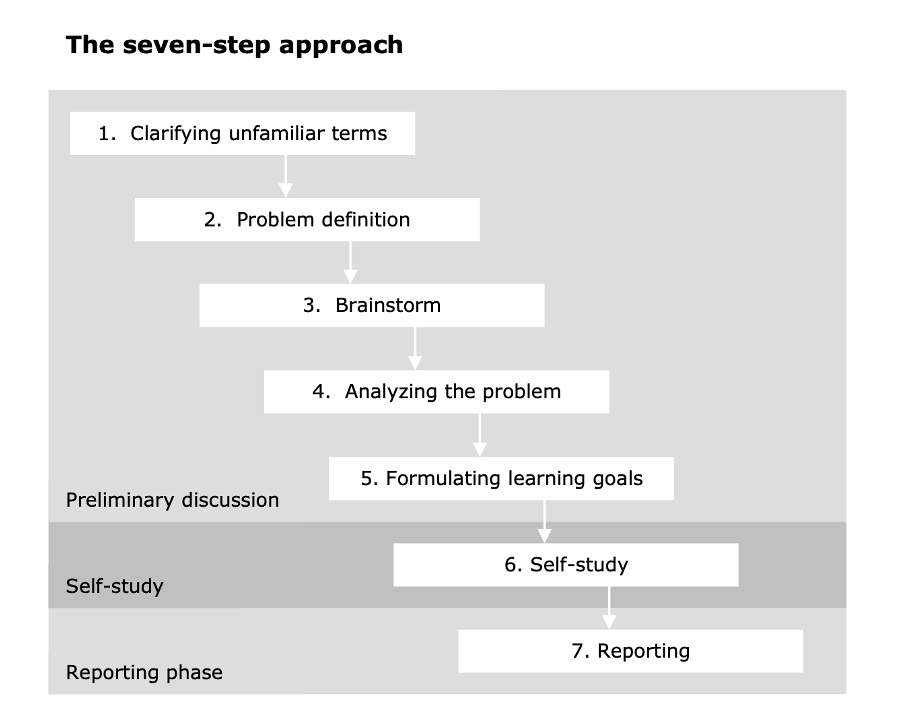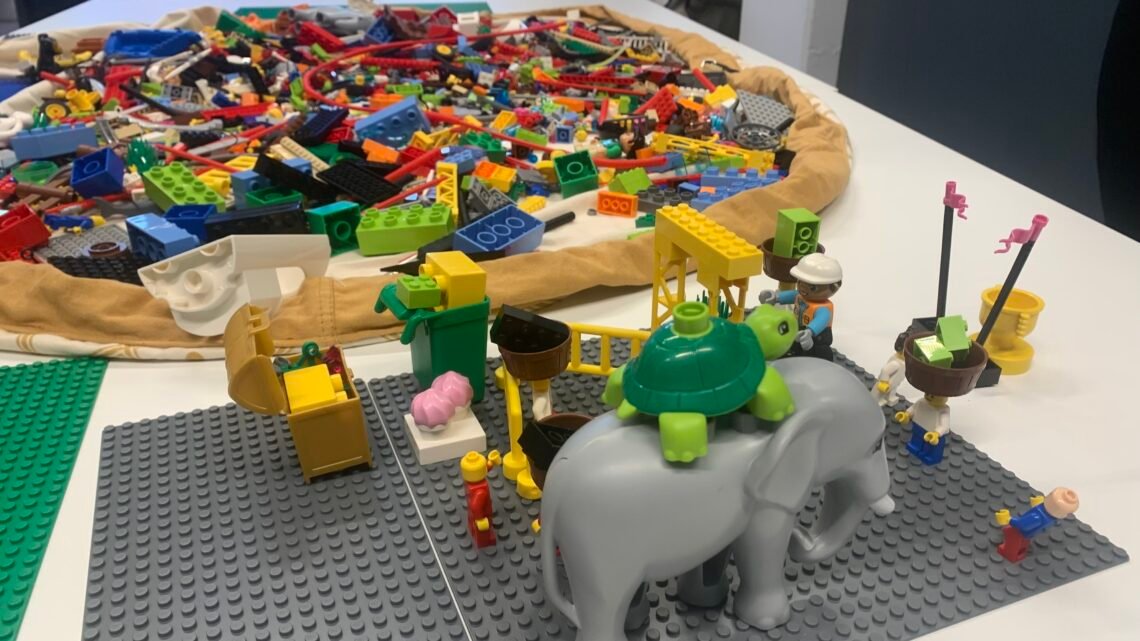Building Understanding – The role of Legos in supporting problem-based-learning
On the 11th of April, my classmates and I walked into the room without knowing what the upcoming tutorial would be like. A mysterious bag, which we had just seen our tutor (impressively) carry down the stairs was sitting behind her chair. It was the second week of the honours course, and for most of us – the first experience with problem-based learning (PBL).
Problem-based learning (as it sounds) starts with a problem, and students follow seven steps; first defining the problem, creating learning objectives, and reporting their results (Camp et al., 2014). The tutor steps back in PBL, and learning is directed by the students. There are two main roles taken by the students: the chair and the scribe. The chair is responsible for the discussion following the seven steps, clarifying misunderstandings, and prompting students to contribute. On the other hand, the scribe summarises the discussion, selects important aspects, and ensures everyone understands the concepts by asking for clarification on what they wrote. Every other student contributes to the discussion guided by the seven steps (Camp et al., 2014).

Step 1: Clarifying Unfamiliar Terms
Every tutorial begins with an introduction to a problem. In the past weeks, we have discussed: sleeping problems among children in the Netherlands, obesity in Norwegian children, and improving the self-efficacy among diabetes patients in Rotterdam. Despite the range of problems, they all started the same way: first reading over the problem and clarifying any unclear terms. This provides a strong base for the rest of the discussion. For example, most weeks we ensured everyone was clear on what the target group was which made the next steps easier.
Step 2: Problem Definition
Usually, each description of the problem provided some guidance on the direction our discussion should go and clarity on how to find the problem. For example, for the problem of sleep among children in the Netherlands, we were meant to determine if it was actually a problem. This is difficult because we found that we would default to discussing the solution when the actual purpose of the tutorial was something else. This is also why the tutor’s role is very important, and there were many times when she had to step in to make sure that we were on track.
Step 3: Brainstorm
PBL depends so much on the makeup of the group, and this is especially the case for this step. In the brainstorming step, students take their previous knowledge to come up with the problem definition. Anything can be said, and so another important aspect of PBL is an understanding and accepting group. My tutor made a great effort to bond with every one of us, and I think it shows in the discussions that we had- there are never really points of heated arguments.
Step 4: Analysing the Problem
In this step, the scribe explains what they have written to this point. They explain connections between concepts and how they have organised each idea. This is vital for PBL as everyone has a different way of making notes, so clarification is essential.
Step 5: Formulating Learning Goals
This step marks the end of the first discussion, students take what they have so far and write learning objectives to ultimately answer the questions written in step 2. The purpose of these learning goals is to help guide research on answering these objectives. At the end of the first tutorial, everyone leaves with a couple of learning objectives to base their research on.
Step 6: Self Study
Using these learning goals, students find articles. PBL allows for a multitude of answers because every student will focus on a different goal and find different articles. This has also been proven the case as so far I don’t think any of us have read the same article. Then by the next tutorial, the second discussion occurs.
Step 7: Reporting
The reporting phase starts with everyone discussing which goal they focused on and what articles they read. Then the chair starts by going over each goal and everyone in the groups starts discussing what they found. The scribe continues to write everyone’s findings in a shared document so everyone can see an overview of the discussion.
Thoughts on PBL
Overall, my experience with PBL has been surprisingly insightful and a good learning experience. This method allows students to shape their learning experience and so every member is responsible for the group’s learning which can be good or bad. Unfortunately, like many group-centred learning, it is very dependent on the makeup of the group. Fortunately, my tutorial fostered an environment where everyone can speak what they want, and every student I have interacted with has made a true effort to get to know you outside of the classroom.
Reflecting on my experience so far with PBL, I am reminded of the anticipation we felt walking into that classroom and looking at the mysterious bag. In the honours course in addition to practising with PBL, we are currently working in smaller groups on solving a problem for the university. The problem is very intimidating and hard to conceptualise. Thankfully the mysterious bag helped with this.
After going over the plan for the tutorial, my tutor explained that we would be building Legos. My classmates and I looked at each other with excitement. She placed two bags full of Legos on the tables and started by assigning us to build the tallest tower. We had two minutes, and by the end of it, I had the highest tower (which I am very proud of). She then asked us to build a tower with our groups. My group mates and I immediately started splitting up the work; building a strong base for the tower, and then stacking bricks to make it taller.
After a few more fun exercises, she asked us to build the problem, first individually, and then as a group. Using Legos helped with conceptualising the problem and getting to the root of how we understood it, which again helped with the later steps of solving the problem for the university. PBL and this exercise rely so much on group work; everyone needs to contribute or the building won’t get built, or the problem won’t get solved. Who would have thought 2nd-year university students playing with legos could have been a good base for problem-solving at a university level?
References:
Camp, G., Van Het Kaar, A., Van Der Molen, H., & Schmidt, H. (2014). PBL: step by step: a guide for students and tutors. Institute of Psychology, Erasmus University Rotterdam.
Camp, G., Van Het Kaar, A., Van Der Molen, H., & Schmidt, H. (2014). The seven-step approach. [Chart] Institute of Psychology, Erasmus University Rotterdam. Retrieved May 30, 2024, from https://canvas.uva.nl/courses/43470/files/10398571?wrap=1

Hannah Brunnschweiler is a bachelor’s student of Communication Science. As of now, she does not know what specific domain she wants to study in but is curious about persuasive or political communication. In her studies, she enjoys statistics and conducting research. Outside of university, she enjoys going on walks, listening to music or reading. She loves being creative, whether that is through photography or learning how to play a new song.
